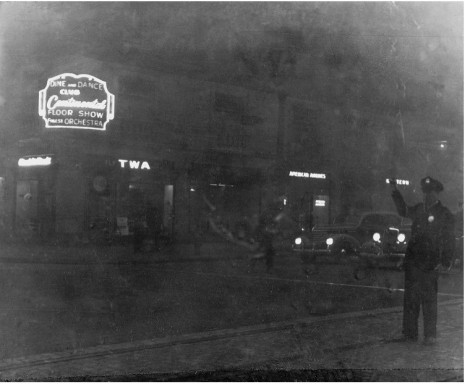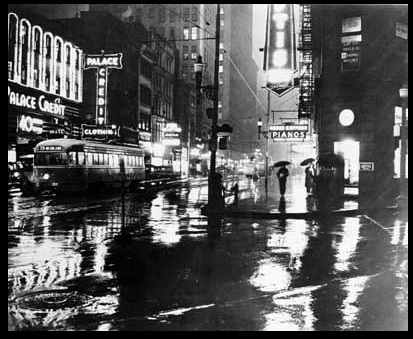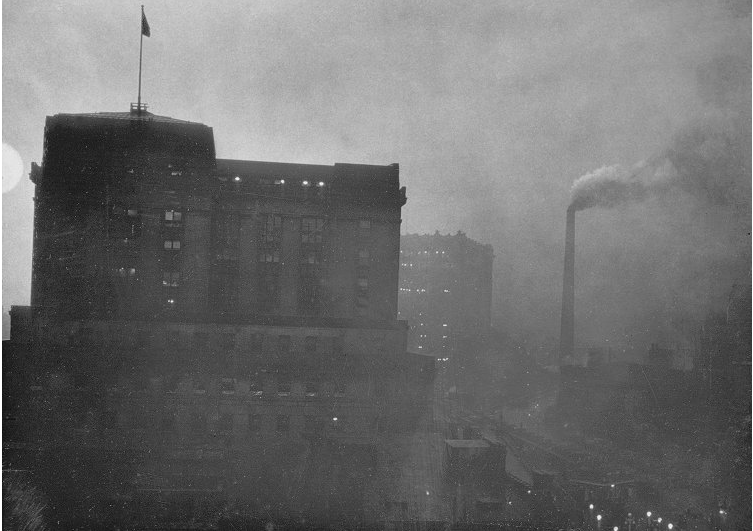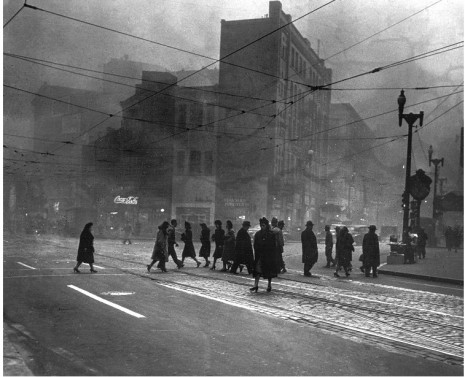You may have seen recent news reports about London’s dangerous air quality.
In light of the current political climate in the U.S., I thought it might be timely to re-post a blog I wrote a few years ago about the history of air pollution here in the United States. It shows pictures of what Pittsburgh and Saint Louis looked like prior to the smoke control ordinances of the mid-1940s.
The EPA is a vital organization. I fear for its future.
On Friday I blogged about the Donora Death Fog of 1948, and alluded to the city of Pittsburgh’s smoke control ordinances. Pittsburgh’s amazing turnaround will be the subject of today’s blog.
My parents met one another when they were both in graduate school at the University of Pittsburgh, just after World War II. I knew from having researched sanitation and pollution that Pittsburgh was once a very smoky city, but I didn’t make the connection until just recently that my parents lived there during the smoky time. And I had no idea just how smoky the city actually was. I contacted the University of Pittsburgh Archives Center, and they very kindly gave me permission to reprint these pictures from the late 30s and early 40s. They’re kind of amazing.
What’s incredible to realize is that these pictures were shot during the daytime.
This one shows a street scene in St. Louis, which is where the smoke control ordinance was first enacted and upon which the Pittsburgh program was based.
 According to the University of Pittsburgh website, the smoke control ordinances regulated the burning of coal by locomotives, the steel industry, and individual citizens. The city had been trying since 1807 to control the smoke, but for decades, people believed that heavy smoke in the air indicated high productivity. They also thought smoke was good for the lungs and for the crops. So legislation wasn’t enforced until after World War II.
According to the University of Pittsburgh website, the smoke control ordinances regulated the burning of coal by locomotives, the steel industry, and individual citizens. The city had been trying since 1807 to control the smoke, but for decades, people believed that heavy smoke in the air indicated high productivity. They also thought smoke was good for the lungs and for the crops. So legislation wasn’t enforced until after World War II.
This final shot is quite extraordinary, and eerily beautiful. The Heinz History Center gave me permission to run it. Remember: it’s daytime.

Downtown Pittsburgh at 9:20 a.m. in the fall of 1945, before smoke control Library and Archives Division, Historical Society of Western Pennsylvania, Pittsburgh, PA
On Wednesday’s blog–the deadly London Fog of 1952.

